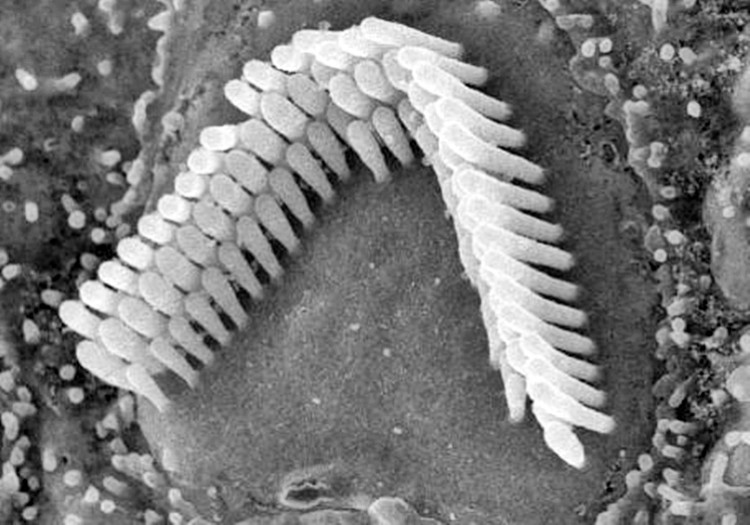A new approach to restore hearing offers hope to the hundreds of millions of people suffering from this devastating disability.
A new study reveals a team of scientists in the United States has been able to re-grow the sensory hair cells found in the cochlea. The cochlea is the part of the inner ear that converts sound vibrations into electrical signals understood by the brain as sound. Unfortunately, sensory hair cells can be permanently lost due to age or noise damage.
Mammals are the oddballs in the animal kingdom when it comes to cochlear regeneration, said Dr. Jingyuan Zhang, Ph.D., with the University of Rochester Department of Biology and a co-author of the study published in the European Journal of Neuroscience. He said humans are the only vertebrates that can't do this.
Research conducted in 2012 identified a family of receptors -- the epidermal growth factor (EGF) - as responsible for activating support cells in the auditory organs of birds. When triggered, these cells proliferate and foster the growth of new sensory hair cells.
Researchers led by Dr. Patricia White Ph.D. felt this signaling pathway could be manipulated to produce a similar result in mammals such as human beings. Dr. White is a research associate professor at the University of Rochester Medical Center (URMC) Del Monte Institute for Neuroscience and lead author of the study.
She explained that in mice, the cochlea expresses EGF receptors throughout the animal's life, but apparently never drive the regeneration of hair cells. She suggested that perhaps during mammalian evolution, there were changes in the expression of intracellular regulators of EGF receptor family signaling.
These regulators might have altered the outcome of signaling, blocking the regeneration of cochlear hair cells. She said her team's research is focused on finding a way switch the pathway temporarily to promote both regeneration of hair cells and their integration with nerve cells, both of which are critical for hearing.
In the new study, the team tested the theory that signaling from the EGF family of receptors can play a role in cochlear regeneration in mammals. They focused on a specific receptor called ERBB2, which is found in cochlear support cells.
Researchers found that activating the ERBB2 pathway triggered an increasing series of cellular events. These events saw cochlear support cells begin to increase and start the process of activating other neighboring stem cells to become new sensory hair cells. It appears this process not only impacts the regeneration of sensory hair cells but also supports their integration with nerve cells.
The process of repairing hearing is a complex problem and requires a series of cellular events, said Dr. White. She said you have to regenerate sensory hair cells, which have to function properly and connect with the necessary network of neurons.
She said her team's research demonstrates a signaling pathway that can be activated by different methods and could represent a new approach to cochlear regeneration and, ultimately, restoration of hearing.
The study involved researchers from URMC and the Massachusetts Ear and Eye Infirmary, which is part of Harvard Medical School.






